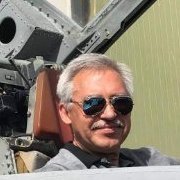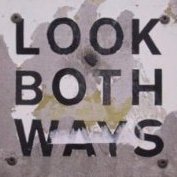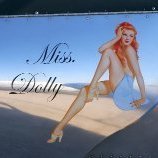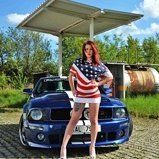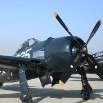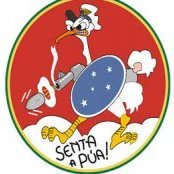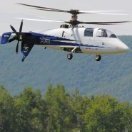Leaderboard
Popular Content
Showing content with the highest reputation on 12/30/2021 in all areas
-
hello everyone No way of dressing it up, but I have changed subject again... I will go back to the Fairey Firefly - this is it's second time of falling out of favour, but when you get the urge what do you do? My new flame is the early longnose P40. I have always thought it would make a good subject for me and very nearly started one after my P51, but didn't fancy another American aircraft in quick succession. It's easy to see why.. ..beautiful lines, natural metal and technically interesting. This is G-CIIO operated by The Fighter Collection who have said I can come and take at look at her once we are into the New Year and assuming there is no covid funny business preventing a visit... I have spent the last month or so researching and finding out about the airframe and the differences with the later short nose P40s and the earlier P36 - of which there are many. I also liked the timing with the GWH 1/32 kit coming out as folks will be talking P40's for a bit I had Jumpeii Temmas plans scaled and corresponded with Witold Jaworski who has digitally modelled the P40C and had done loads of research and analysis of factory drawings One thing I really looked forward to was doing what I did with my P51 and getting stuck into those drawings to replicate everything part by part. This was always something that hindered the Firefly, I just don't like working in a vacuum, I like the research and knowing what I am making is accurate An example like this - here is the tailwheel door in the parts manual.. ..I can find the part number and in Aircorps Library, look up the drawings.. ..then scale and copy the drawings to make up a set of photo-etch parts.. ..I did this hundereds of times and now have the mother of all PE sheets at 28cm by 47cm with everything I thought I could do in PE represented.. i thought I would base the model on the 21st Century Toys 'model' as I did with their Fw190D -this was on the basis that while it is a toy, the 190 was dimensionally pretty accurate.. So a trip to ebay and £160 lighter, one turned up.. Once the 'model' arrived I set about destroying it into it's component parts - this involved sawing some of the nose elements in half so I ended up with effectively two fuselage halves.. cue the first plan comparison and a very deflated feeling... ..it's too short, too narrow, has what looks like the late chin profile and is generally all over the place.. ..the rear fuselage is particularly out.. ..now, I did toy with the idea of just getting on with reworking it, but the more I looked, the more work I found - in the end I was trying to justify it because I had spent the money.. In the end, I bit the bullet and decided to scratch build it - I have no excuse - I have great drawings and having just scratchbuilt a Hawker Fury so feeling pretty confident.. ..first step was to get a sheet of perspex acrylic to trace out a 'keel'... ..I used a scalpel to score the perspex - you may juts be able to see some of the station lines here (on the red line).. ..once I had all the station points and outlines done, I used a jigsaw and a cutting disc to cut out the profile - with a big bit missing for where the cockpit is.. ..this again told me how out of whack the 21st Century Toys model is.. ..using Jumpeii's profiles I cut out all the fuselage station formers.. ..and cemented them in place using a mini set square.. ..then I soldered some square brass stock to get the dihedral right for wings to slide into - there is a little perspex jig holding it upright inbetween them.. ..they were epoxied in place with the smaller sliding box sections in place so the angles and dangles can be seen and the positioning made correct.. ..so there we are - thousands of hours of work to go, but it feels good to have something fresh on the bench and thats what it's all about right? TTFN Peter19 points
-

My completed builds 2021 - not bad year for LSP
IvanVasili and 9 others reacted to ShelbyGT500 for a topic
Hello friends And here are my LS planes for this year: Mig-29 A izd. 9.12 : Mig-21 BIS : Mig-21 UM: Mig-21 MF-R: AS 565 MBe Panther : And two non LSP birds, but still big machines: Ju-52 at 48 scale: B-2 Spirit of Alaska at 72 scale: Well, those were for that year up-coming a lot of LSP interesting projects like AS 532 Cougar, Mig-23 UB and Su-33, all at 32-nd scale So thank you as always for stopping by, Cheers and Happy New 2022 Year10 points -
Assembled all the painted parts together. And assembled the fuselage.10 points
-
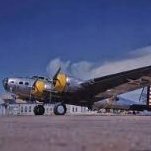
HK B-17...C 5/4 sweating the metal
Model_Monkey and 9 others reacted to brahman104 for a topic
Last post to round off the year Slowly working my way up the right side. Lots of different shaped panels to watch out for, especially around the main cabin door. Turns out that photos outside aren't that great, but you get the idea of where I'm at! Hopefully I can smash out the main ones left on the this side soon and get into the real fun around the cockpit I think we all know 2022 won't see the end of this build, but I sure hope I can continue at the rate of this year! Happy new year everyone Craig10 points -
RAF FG.1 XV571 WILD HARE Phantom Conversion
Seversky and 9 others reacted to Anthony in NZ for a topic
Excellent! That's what it's all about Paint on. Tried not to get too fussy here. Started with a black base then built up with 3 shades of green. This area got filthy, and worn. I wont go silly in there but after I do a little wash, silver prisma pencil I should be all good to go to add plumbing....eeek In the above pic the green looks quite bright, but it dosent look quite that bright in real life. Maybe because its shown 10x bigger on my screen than the actual kit? Anyway I might have a lie down and think about wiring and plumbing Cheers Anthony (who's been on a roll today!)10 points -
Now, those circular inspection panels provided on both the Eduard and AIMS PE sheets. I had a look at both yesterday and immediately thought they both looked too "heavy" when positioned on the wing, too obtrusive to my eye. So I came up with an alternative. Luckily I had taken a photo of part of the tailplane of the latest one being restored at Henstridge: so I dragged this onto the Silhouette screen, scaled it by measuring the ICM part then drew the circles: You can see that they measure just under 3mm o/d. Cut out and put into position, with the Eduard and AIMS ones for comparison. AIMS is good for size, Eduard far too large: They'll look ok under paint, kind of "there but not there".9 points
-

East German 1:32 MiG-23ML - JG-9 Peenemünde
Starfighter and 8 others reacted to Iain for a topic
Resurrected photos to replaced the 'lost' ones earlier in the thread. Cockpit - a quick paint job on the excellent Aires resin set: Iain9 points -
As of tonight I have fitted the cabin interior (except the I.P.) and engines, so far everything has been a good fit to this point. I also added seat rails from T stock just for a bit of contrast on the floor, instrument decals are "Airscale" all laid out ready to glue up and finally, all stuck together Thanks for looking9 points
-
HK Models 1/32 B-17E/F WIP
HB252 and 7 others reacted to Gil Hodges for a topic
Been a few weeks as the figures gave me some fits....like I figured they would! However, this is the end result.....over all as planned except for moving the top turret guy to the waist area because he'd interfere with the fit and ease of taking the top section of the fuselage on and off. Overall, I'm pleased....these are the first figures I've tried to "seriously" paint in a decade or more; though I'm sure more experienced painters will cringe a bit! By the way, the ball turret is just siting in position....next step is to close her up and start sanding seams! Gil8 points -
RAF FG.1 XV571 WILD HARE Phantom Conversion
Seversky and 6 others reacted to Anthony in NZ for a topic
Thank you so much! Love your thoughts and encouragement Thanks, I thought of that Matt, but shipping to NZ from the US is almost impossible right now and I cant wait.....I probably should have. Please somebody stop me! Most of this will barely be seen.... @Archer Fine Transfers you have me trapped in your vortex of products! Cheers Anthony7 points -
The end of the year is approaching, time for my finished models. By the way, I wish you great models in 2022.6 points
-
Thanks for looking in, a bit pedestrian compared to the fast movers and bomb carriers being built here I know. Well with -46 Celsius but that's with the wind, only -41 without the wind...I've decided it's a great day to stay inside, sip spiced rum and fill and sand some seams. This is the last time this engine will be seen; smearing and sanding seams has begun The fun continues Thanks for looking in6 points
-
Meanwhile on that topic of magnets, I have received some thin circular magnets (1/32 inch thick, 1/16 inch diameter), and some thin steel sheet stock (.004 inch thick) in the mail. I believe that is going to do the trick for removable panels that need to be secured to contour. Stick seems pretty good. I'll do some testing on it very soon. I know this is down the road a ways, but the decision must be made now so that I can proceed on the firewall bulkhead, which provides the aft edge of the engine accessory bay panels and the flange they attach to. They are going to be removable so all that clap trap can be seen! And the firewall is soon to come.6 points
-
Just a quick update - really don't have anything picture worthy of my progress. I'm still doing some scribing and riveting, also plugging away on the exhausts. Waiting on a shipment of some AK Extreme Metal paints (love this stuff, sprays very easy and once dry, is incredibly durable) before I start the area aft of the exhaust nozzles. On the subject of the exhaust nozzles, these seem to come in a variety of colors. Some are just a grayish metallic color, while others are nearly black. For whatever reason, the nozzles on Vietnam based, early war F-4's mostly seem to be of the darker variety. Here is a great picture that illustrates this: That's the effect I'm going after. Also, I'm starting to putter around with the cockpit. Most of my cockpit work is on hold until Quinta finally gets around to releasing the cockpit set I posted a few weeks ago. In the meantime, I've started to research what the finished product will look like. The best reference I've found for a "real" (by that I mean unrestored) cockpit is the one on the F-4C on display at the USAF Museum. The exterior of this jet was given a pretty inaccurate paint job but the folks at the museum opted to leave the interior untouched. I've yet to see any pictures that shows what a heavily used Phantom cockpit looks like that are better than these. Looks like the crew just shut down the jet and walked off for a cold beer. Front pit: Note that the footwell walls are cut off immediately past the instrument panel and the quilted fabric present on either side. Am currently working on these features. Wizzo's pit: Note the fabric covers on either side of the foot wells, I'll be adding these as well. A few bits on the IP weren't present on the early jets but all in all, this is a great reference. Lastly, a good number of the pictures I posted in previous posts (primarily of the ejection seats), came from Chris Mayer. I neglected to give him credit in those posts. He graciously provided a great deal of info for this build. It's much appreciated. So anyway, that's all I've got. Hope to have some pictures of the actual model to share within the next few days. Stay tuned and thanks for looking!6 points
-
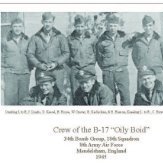
1/24 Airfix P-51 Cavalier Turbo Mustang Conversion
sandokan and 5 others reacted to patricksparks for a topic
Finally glued the forward portion of the new cowling onto the rest of the fuselage, I figured that I would approach the surface detail different than I was originally intended, I was going to sand all the Airfix detail off and emboss new riveting but I decided to go with Archer rivets and leave the kit detail intact, I scribed all the panel lines into the new engine nacelle and tried to make a little extra deep to emulate what is one the original kit. Don't know why I did it this way, just felt like it ...??? I have also completed the right cockpit wall detail, it is a great deal of speculation as to what was actually there, I figured that the original oxygen system was probably removed a replaced with a more upadated one, so I put a couple guages on the new side console, some knobs and an oxygen hose recepticle along with a guess work of toggle switches etc. I did a little more work on the I.P. and held it in place for a photo.6 points -

East German 1:32 MiG-23ML - JG-9 Peenemünde
Starfighter and 4 others reacted to Iain for a topic
Airframe together - it actually took very little time to get this far: I've removed the tape over the radome to check for any issues - it's been on there for, maybe, 6 years. Happy to report no issues, so will leave the rest of the masking in place whilst I wait for some of the replacement resin parts to arrive. As some may remember, this *was* going to be finished as a 'Free Libya' airframe - but I'm a fickle beast and now drawn, like a moth, to the DDR scheme instead. Come on postie - are my parts here yet?! Iain5 points -
godo good good... today double session! I would say that tonight I also closed the transparent chapter, except for the navigation lights, but they do not worry me at all, in light of what has been done so far. I completed the rear sliding canopy, adding the inner tubes as far as they will be seen once installed. I could not put these all the way back due to the tight tolerances with the fuselage, although my copy is slightly oversized compared to the original. modeling's mysteries. with a scrap copy I made the front slide, a simple affair, if it weren't for the tracks on which it slides. however, even this one is finished. here you can see how easy it is to damage the 0.13mm plasticard... I hope to fix it with some mr. surfacer and if that doesn't work, aluminum foil here too. a general rehearsal to verify that nothing is missing, after having also installed the rear sliding rails... ...ok, I'd say we're there. here you can see the difference between right and left flank, both of the clear parts and of the fuselage. and go on. a wash with alcohol and a dip in the future. soon we will laugh at painting the internal frames! cheers, Paolo5 points
-
Thanks all! This one is an anomaly when it comes to certain things..........IE, re-scribing. Because of her frankly massive weight for a model (shes a lady, but lets not mince words here!) so far about 1.4 lbs /0.1 st, she is a literally handful to hold for very long during re-scribing. Thus why Ive put it off this long. That, and its not a fun process for me in general, but to get past the hump Ill need to dig deep, bare down and suck it up. This will lead to correcting the last of the surface imperfections after that, and then probably back to the gear before overall paint happens, as I've found mixing it up on this models seems to be one of the few ways to release the tension of the build when seemingly every single step needs a tweak or a modification of some kind. More soon, Cheers5 points
-
Thanks again one and all.............. Not a lot to report progress wise with Christmas stuff and fam and going on-call for work, but I did manage to finally mask all the openings again and spray a final leveling coat of Mr Finishing Surfacer 1500 gray. I was going to go white again, but its just too hard to see what needs re-scribing and what doesn't. This will be the last overall primer coat, as I intend to use this coat to fix the myriad of imperfections, scratches, sanding marks as well as missing panel and rivet lines. Back to the Grey Ghost............ She looks much better all one color and not so chaotic and disheveled looking It took a LOT more primer than I thought it might, and my hand hurt from the length of the air brush session, so I know shes going to take a mass amount of paint. I'm now on-call for my work, but need to get the two prizes I donated out to their recipients as well, so might be a few days before I can start on the re-scribe. Cheers!5 points
-
Below is my first attempt at building a model in over 16-17 years. This kite is that of my great-uncle, 2nd Lt Virgil G Ray. Marine pilots in the Solomons did not have assigned planes and I have pictures of Virgil in or around four different Corsairs. However, I have two pictures of Virgil posing around this plane, so I'll assume he flew it at least once. The subject is an F4U-1 Birdcage with the nose art 'Mad Duck' and the number 'White 80'. I believe these pictures to be from Sept 1943 when VMF-214 was flying out of Munda, but I am not 100% positive. Virgil flew three tours with VMF-122, 112 and 214 between May and October 1943, before disappearing on a flight on 13 Oct 1943. More information regarding Virgil can be found at https://missingmarines.com/virgil-g-ray/ or in Bruce Gamble's works on VMF-214. In short, he was an original member of the Blacksheep Squadron, and flew on Boyington's division in Sept 1943 on multiple sorties, including a rather famous dogfight in which Boyington claimed 5 victories. In my research, Virgil was credited with at least one, possibly two, probable 'kills' in June and Sept 1943, although we all know how subjective those claims can be. I'll include some documents and original pictures in the post below. This kit was made as a birthday present for my father, also a former Naval aviator. The kit was built out of the box with the exception of some HGW Wet Transfers and Eduard masks. Paints were mostly Tamiya, with some Model Master and Vallejo. Weathering was Tamiya panel line wash, and Winsor and Newton artists oils for filtering and blending. I also did some chipping with a XF-16. I attempted a bit of a preshading, as well as Doog's Models style 'sandwich shading' when spraying the base colors, to introduce tonal variety into the paint scheme. All in all, I think this turned out decent for my first kit since I was 15-16 years old or so. Certainly some errors you'll find if you look. Also some things I would do differently. All in all this project was a ton of fun, and I've been bitten by the modeling bug again. I've already purchased the Tamiya P-38, P-47, a Trumpeter SBD and Bf109G10 on deck. I eventually plan to do another 1/32 Birdcage that Virgil flew, in the earlier two tone scheme and some cool squadron art of VMF-122.4 points
-
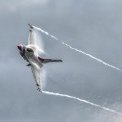
My 2021.
Anthony in NZ and 3 others reacted to Stokey Pete for a topic
As 2022 approaches, and I have my Group build completion submitted, I thought I’d share my completed works for this year. I’ve had quite a productive one compared with previous years, for me anyway. 4 builds across the 4 quarters of the year. Trumpeter Harrier Gr7, not my finest finish, and a bit of a bear to build. A Kitty Hawk Mirage 2000C. A nice enough kit with a few curious engineering choices, but it’s built up nicely enough for my cabinet. Next we go big or go home. Trumpeters epic Flanker. I threw the kitchen sink at this one, including the most ambitious paint job I’ve undertaken. And, I’m rounding of the year with my Shelf of Doom Group Build entry. Tamiya’s F-15E, with a deadly arsenal of JDAMs and AAMs from Reskit and Zactomodels respectively. And that’s my year done. I have a couple of projects for 2022 that will take up my year, and I think that will be it for me, my stash will be empty. I have the Jetmads Viggen, and 6 colourful Vipers to build. After that I have no idea what, or indeed, if I’ll continue to build anything. Best wishes to you all, and here’s to a better year in ‘22.4 points -
So.... just to prove that I've done something on this build over the last week or so: Aft exhaust section with Eduard PE used for the tail hook lock and aft of the two vents on either side. This is just a base layer of paint. AK Extreme Metal Titanium lightly applied over a flat black base coat. Not looking for any shiny metal in this area because it appears there wasn't any. Paint work is rough but again, this is just the base. Hopefully she'll clean up nicely. Cockpit tub. As mentioned above, I cut away the pilot's footwell side walls (I'll add some wiring, etc in this area further in the process) and added the quilted soundproofing fabric below. This was made from lead foil from a wine bottle, using the back side of an X-acto knife to score the diagonal lines present on the real thing. The WSO's cockpit just has plain fabric on the sidewalls. Again, just lead foil; to replicate the snaps, I used a pointed scribing tool to indent the backside of the foil. Just realized how truly awful these pictures are. I think I'm going to invest in a decent lighting system so I can hopefully take better shots. Regardless, I'm hoping you can at least get a feel for what I did here. Upper horizontal stabs. Again, this is just a basecoat. I'll be adding additional shades per the real thing. Lastly, a few aftermarket purchases made when Sprue Brothers had a sale going on. The kit missiles are very basic and I can't imagine using vinyl tires either. Thanks for looking!4 points
-

East German 1:32 MiG-23ML - JG-9 Peenemünde
Starfighter and 3 others reacted to Iain for a topic
And the rest - which should bring this old thread back to the future! Back in a mo... Iain4 points -
.... continueing .... From the corrected vertical tail, 1 mm was sanded off from the top. The next important mile stone is going forward with the colour scheme… PANELS AND COLOUR SCHEME The model got a few recessed panellines with the OLFA panel scriber. But I did not add many as large areas are puttied and not to spoil the surface appearance. A lot can be done also with pencilled lines and shading. As seen, a few base “weathering” effects with black patterns were airbrushed for any recessed panel lines. Now what scheme and air force to pick? At this stage the model is ready to get the first paint coats. My long time modelling friend Erwin persuaded me to make this model in a South Africa Air Force (SAAF) scheme and provided some documentation also from South African friends. The Gripens sport low visibility SAAF markings and flag. I will design the decals with a graphics program on the PC and than to be were laser printed by a friend on decalpaper. For the SAAF scheme the Gripens show a sort of “diamond shaped pattern”. These scheme colours are approx. an overall scheme of Fed.Std FS36320 grey and the diamond in FS36118. Gunze Sangyo acrylic colours were airbrushed of respectively H307 and H305 but any paint brand will do for these Federal Standard colours. Some “soft masking” is needed with now the diamond seen.. The gear bays and door insides will be painted mainly white. MAIN CANOPY As the cockpit sill had been increased 4 mm in length, so the canopy should be increased in length, the proportions will than also look like seen on the real Gripen. The approach chosen was to shave off any raised kit canopy details. Frames of 2 mm each at the rear and front edges will be added from bended card strips. First the canopy was, after masking the main areas, carefully sanded at the raised edges so the raised frames are now removed/hidden and than polish A LOT! The needed canopy extension of frames of 2x 2 mm width: at front and rear edges were made with bended plastic strip. The interior of the canopy framing was made from scrap with card looking at photos. This canopy will be set turned open to the left, there is a strength bar aft of the seat. Also, I saw rather wide edges at the canopy front with the mirrors almost being unvisible when seen from the front. The mirrors were cut from metal sheet. Detailing the canopy requires care as not to damage the clear section. Main frame colours are black. IMPORTANT NOTE: a central thin frame is not yet set, it will be added later onto the canopy top centre line. WINDSCREEN The windscreen was the next item. It was placed in position but it did not look good. It seemed that the steep angle was a bit too much. To make sure, another overall model side view photo was made from long distance to avoid camera lense distortion. With the photo editor program it superimposed on the scale drawing. I concluded that the windscreen should still be set about 2 mm more forward and tilted a bit to get a less steep angle…. This can be achieved in 2 steps: first by removing some plastic at the rear area of the windscreen mating surface; this is marked here “red”: Sand symmetrical. Next, I added a strip of 1 mm below the front of the wind screen nose at the mating surface. There will than be a visible gap but this can be closed/ filled with putty. The other small gap between the windscreen rear edge and front of canopy is not obvious as the canopy will be set open on the model. To be done…. The windscreen was set, surrounding surfaces protected with masking tape; any gaps filled were with putty and sanded. PHOTO CHECKS A new side view photo with corrected windscreen sit (again from long distance to avoid camera lense distortion) was made and another check at seen here: The side profile looks fine though the intake looks to be about 1 mm bit too far forward but this is almost undetectable. An upper view photo was made from a large distance to do a check. In upper plan view the model looks quite good. The span is correct with a better leading edge sweep. The trailing edge angle and wing chord at the ailerons deviate as expected a bit as the wing planform was rotated but this is not obvious when looking at the model. The nose upper profile with canopy and wind screen looks good now. Note that the canopy will be set in open position (and will get a central thin running frame). As regarding the intakes they look OK though the angled upper is a bit different than the drawing, but may be here the drawing is not entirely correct. Same applies for the exact pylon locations, the drawing may not be spot on. It was concluded these issues are minor. After all that effort done on correcting the Revell kit I was happy! Ready to proceed further on detailing such as the cockpit, seat etc. in the new year.... Have a Great New Year! Meindert4 points
-

Revell Spitfire FRIXc MK915 pink recon
Anthony in NZ and 3 others reacted to Fanes for a topic
The undead Spitfire Well the Mojo kicked in - maybe triggered by my raflle win - and a bunch of long awaited AM has arrived from Hannants. I'll use some of Pastor John's beautiful PE parts to dress up my FR IX - most importantly the camera compartment door. My scratch built attempt was for sure everything but beautiful. The Barracuda parts are meant to solve two emiment shortcomings of the Revell kit. A: the horrible radiators The replacement parts were ordered for my planned RP XI conversion (with another AIMS set) buuuuuut they would suit this Spitty as well. Only problem: I already glued the wings and you're supposed to drop them in from above. I see the following options: live with what Revell provides cut the alignment tabs from the resin part, drop in in from below and then struggle a lot to get them flush try to wiggle them in with their alignment tabs - may be possible since the inboard quarter (I guess) isn't covered from the wing's top What would you recommend? B: the carb intake Revell's intake is awfully short and misses the prominent lip. My initial plan was to hack up the Tamiya part and that to Revell's lower cowl. The Barracuda part adresses said issue with a drop fit replacement. But see for yourself (Tamiya - Revell - Barracuda): Well, upon closer inspection I noticed that a certain someone ordered the wrong resin part. Now I have the short intake as opposed to the (late) long one. Hello - another order from Hannants... C: the swiss cheese, eh rivets A well critized aspect of the Revell kit is that they let Trumpy's mad rivetter let do the fuselage surface detail. They are really way too deep. For unknown reasons the detail on the wings and one side of each elevator is much more refined. My solution so far: a heavy coat of primer sanded back to plastic to make the rivets more shallow The rivets on the engine cowl are much finer. Didn't notice that without the primer though. Up clos to where we are now. The vertical lines aren't stressed skin but nasty sink marks. I'll get the CA and sanding stick ready. Once the surface is clean and smooth, I will finally get to install the camera in its compartment, insert the cockpit and close up the fuselage.4 points -
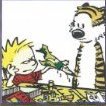
EA-6B Prowler (02 April: Done!)
johncrow and 3 others reacted to easixpedro for a topic
Ok, quick post to show you where my heads at--thinking about weight. The kit landing gear is great and looks like the real deal. Hefty too. Waaay too much in fact for what I'm doing. Case in point, 33 Grams before all the bits and bobs are added, plus resin tires, which frankly are a must. One main landing gear strut is 13 Grams Just the resin tire (minus the rims, which will add more) add another 4 Grams So last night, I started tinkering with how to make the landing gear. I could cast them in resin, but that's still a lot of weight adding up, and all forward of the hook point. Searching through my scraps of styrene, I found a couple of tubes that were suitable diameter and started making my own. Actually went better than I'd imagined and I think is going to be a viable way forward. Here's the one I started building. Just started adding bits that I saw on the metal kit part, ensuring that wherever kit parts attached, they actually fit, and that everything lined up/was symmetrical. (Apologies for the blurry pic--will give better ones once I actually start the gear). But check it out--1 Gram! I can probably build everything and still not come close to the weight of the metal bits. The hook itself is super stout--I keep checking it. Potential problem I'm trying to prevent is that the part that extends into the deck isn't that long, so there's a lot of pressure all at point. I trimmed it to less than an inch, and in reality should have kept it at around 1½ to 2" and really buried it in the deck to give it a bit more strength. We'll get 'er done, I'm just not taking any chances. Here's a pic with her and all the stores (held on by tape) for a weight check. Still holds, and is quite steady. -Peter4 points -
PCM Hurricane Fabric wing
Paul in Napier and 3 others reacted to dennismcc for a topic
The red centre masks were replaced and blue mask section removed ready to airbrush the Colourcoats ACRN31 WW2 Roundel Blue. The blue was airbrushed and the masks removed to reveal this Which I am very pleased with Then the tricky bit, placing the masks in position to paint the code letters on the fuselage, they are very large which does not help matters. I've covered over the roundel so that there is no change of it getting damaged by tape or mask, the tape on the left is a guide for the mask. And masks in place, with the letters picked out, at this stage it is difficult to see if the codes are in the correct position, but it looked good to me. Aibrushed with Medium Sea Grey and this was the result. I'll leave well alone for a couple of days and then go for the serials and then the stencils. Cheers Dennis4 points -
4 points
-
4 points
-
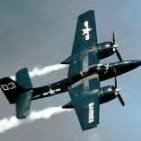
New ICM WW2 US plane kit?
Paul in Napier and 2 others reacted to Out2gtcha for a topic
A silver Tigermoth and a yellow Stearman.........I hope ICM provide the necessary spinner3 points -
There’s a lot to love with this build! Keep it up, please!3 points
-
OK - in yet another of my 'Holy thread resurrection'/'too many squirrels' posts i give you a re-start on a build started as a 'quickie' back in 2013 - and now with added subject creep. It goes like this... My modelling MoJo has been mostly AWOL for the last few years - I get fired up over new projects - and the 3D print world - but have got *very* bad at actually finishing anything. I think the last I actually completed was the two-seat Spit a few years back. This year Christmas hasn't been the best - we lost our cat of 17 years to cancer on 23rd - and I haven't felt the best anyway - not Covid - just a very bad head-cold/chest over last week and a half. Feeling brighter yesterday I got back into watching YouTube videos - and ended up watching more relating to aviation in the former DDR (East Germany). This lead to looking for another project I started for a now closed Cold War group build - a NVA MiG-21. Couldn't find it in the loft - presume it must be at my office. I may have to come back to that... But, I did find the MiG-23 languishing in the loft - covered in dust - and missing the folding ventral fin. Brought it down and gave it a coat of looking at on the living room table. And it looks rather good - better than I remember. Aha - Quickboost 'correcton' ventral fin available - and ordered. Oh - revised dorsal intakes? Why not. Ordered. Oh - intake blanks? New resin wheels? Metal Pitot? Oh, go on then... And, thanks to the Hannants website - Linden Hill decals Brothers in Arms 2: Cold War Finale Mikoyan MiG-23ML - with decals for the East German NVA JG-9 "Heinrich Rau" based at Peenemünde on the Baltic Coast - an airfield I've visited twice now - once flying in on a Flying Club Exped - and a second time on a family 'road-trip'. So - a bit inspired and all ordered, and on the way. Now, whilst all of this 'randomness' was coming together, my friend Spencer Pollard posted a thought on Facebook about modelling - and how we compete with ourselves - and how we should just enjoy the process. That struck a bit of a chord. So - perhaps - I can crack on with the MiG-23 and have something finished in the New Year - just for fun. Now - I realise that most of the photos are missing from earlier posts on this thread - so have captured them all and will re-post this afternoon. In the mean-time: Iain3 points
-
Tamiya 1/48 F-16C
AlbertD and 2 others reacted to TankBuster for a topic
Hi, this is my first time at showing a model on this site and also first model with my new camera a Panasonic Lumix G-85 and 30mm macro lens. Model was not easy as all sprues were warped in box when opened, tailfin had to be replaced at my cost the rest I got away with although had trouble with seam between fuselage halves. Onto the pics if they show up. Cheers Bob.3 points -
I found this great bearcat pic on this man's flicker photo stream which is MASSIVE. Lots of great planes from what looks like years of airshows and museums. https://www.flickr.com/people/ajw1970/ Surf the albums. Lots of high res pics of things.3 points
-
Much appreciated! Was able to find this. Model is on the other side of the country now. Will step up the camera work for the next one.3 points
-

1/18 Scale Blue Box F4U-1A Corsair Modification
patricksparks and 2 others reacted to Out2gtcha for a topic
Honestly, Tamiyas rattle can paint is some of the best paint out there IMHO, in terms of how they lay down and how they dry. With an experienced hand with them that knows how to deal with the larger amount of particulates that come out, they can really look good in the end. In this case with the larger size of the beast, I think it will work even better than on 32nd stuff.3 points -
KopeckyScaleModels
geedubelyer and 2 others reacted to CruZz for a topic
Some modifications on 1/32 Modern F-15E wheels3 points -
hi oh! small advancement: I thermoformed (without resorting to vacuum, simply by brute force pushing the form into the heated sheet with the heat gun) four examples of rear canopy. I chose the best one, and I installed the correct frame inside and outside, taken from photos and drawings, therefore very approximate, but I still think better than the one proposed by matchbox. while I was there I stretched the lower edge, in order to have a match for the track on which to slide, a detail obviously omitted in the kit. obviously there is still a lot of work to do, but the bulk is done. cheers, Paolo3 points
-
Let me show you my progress. The main near term goal here is to complete the cockpit (except the seat and armor plate). Recall the sequencing is of critical importance due to access issues. First, this thing has been sporting one rudder pedal for months on end, sticking up like an antenna, protected by a specially made guard. No longer - we now have both rudder pedals: Man - that lower hold has really gotten dusty and dirty. I might just leave it that way. Or dirty it up some more. Also, one of the steps I have on my list is to recheck all applicable drawings to see if I forgot something - and I did! Look: I already had a fluorescent light on the LH side - now I have one on the RH side. Later, after I install the windshield, two more will be fabricated and installed (they attach to the windshield post). Just simple tube and strip stock, and .022 solder for the wire. Next on the list was to (drum roll please) join the LH and RH center fuselage halves. Finally! Here: No more dry fitting - they are glued and epoxied. Too late to go back. You will note on that last shot I have spliced the seat mount beam on the aft cockpit bulkhead. You may recall that many months ago I sawed it in half. Also note the rudder cables flying all over the place... I had planned on doing the belly door - but I have now decided to delay it. I think it is better sequenced later. Next on the list (and I have a written living list) is as follows: 1. The fire wall (this will be a big and tricky project) 2. The instrument panel shroud, or hood (another tricky project) - this includes the gun sight and front bullet proof glass. 3. The instrument panel - I have an Airscale special that Peter did for me about a year ago. He should be pleased this work is coming up finally. I may reverse the order some - we'll see how it goes. This all will ultimately support joining the center fuselage to the center wing. At that time, I can complete the cockpit 100% (except the seat, unless I can figure out how to install it without the aft fuselage in place....) Take care, and have a happy safe covid-free New Year!3 points
-
I spent a bit of time...other than time spent drinking spice rum and eating turkey tinkering on the Cessna. Almost everything (surface wise) needs a sanding, at least for the projected gloss white paint I'm hoping to put on later. I was going to make my own 3 blade props until I realize I had to make 3 more backwards from what I'd done. Forgot one engine is backwards I guess (don't ask how I've managed to live this long) So, back to the original kit parts with 2 blades per engine (I can't imagine how noisy this real thing must be) Anyway, a bit of progress here; engines My abortive attempt at 3 blade props engines with a bit of paint And that's it for this update Thanks for looking3 points
-
Cool! Love it.2 points
-
ICM 1/35 CH-54?
scvrobeson and one other reacted to John1 for a topic
Points awarded for the first modeler on LSP who recreates all of this in perfect detail: Wonder if the aftermarket 3D printing folks will step up on this. I can just see it - "35th scale, Full Detail CH-54 Upper Deck" with transmission and engines. $950.00.2 points -
That's what makes builds like this so special. Really appreciate you taking the time to share the backstory behind this aircraft, in addition to all your research on the subject itself.2 points
-
Dear lord... We'll have to conjure up some new accolades before you're done with this magnum opus, Jay. Re: exterior, I'm in full agreement with the other fellas, considering the level of your work everywhere else it's a no-brainer, gotta get rid of those trenches and divots somehow. Granted, it'll be nerve-wracking but I have full confidence that you'll knock this one into the next county. Belay that, next state. Nah, scratch that, into the next galaxy. GO, JAY, GO!2 points
-
More progress this evening.... Boy, since I'm off this week, I seem to be getting things done on this vehicle. I wasn't happy with the status of the coolant torch so I embellished it a little more to represent what it actually looked like. The second photo is kind of dark and crappy. Don't know why the flash worked on one shot but not the next one.... Here's the steering apparatus (for lack of a better, more correct term) before primer and paint. Note to those who may be building this kit: The rod across the vehicle with the steering brake handles does not fit well between the two end hydraulic assemblies. I ended up having to remove the locating circles at either end of the rod so it would fit between the hydraulic ends and not bow up in the middle. Test fit yours as I may have made errors. And with some paint on the pieces: Tracks are assembled and primed. I'm onto the final stages of the hull assembly; I think I can see a pinlight at the end of this Panther tank tunnel. I am enjoying it but this has been taxing my skills and my brain (and fingers) need a break. Next up: Ammunition rack storage securing bands and clips.2 points
-
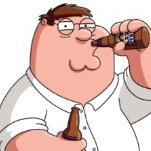
RAF FG.1 XV571 WILD HARE Phantom Conversion
Derek B and one other reacted to Squizzy 78 for a topic
Watching builds like this makes me start planning future builds, amazing work Anthony!!!2 points -

1/18 Curtiss P40C - Finished :)
Martinnfb and one other reacted to chuck540z3 for a topic
LOVE the subject Peter and will love what you are creating in such skilled hands. While we mortals glue together little parts that come in a kit, you make the kit, then put it all together like you are doing right now. Always amazing to me. Cheers, Chuck2 points -
Thanks for the kind words. I think it came out ok for a first try. Hopefully I can improve my building and paint work over the next few builds. I tried not to go too overboard.. employed the 'if you think you need to do more, stop' mindset.2 points
-
AIMS 1/32 Mistel S3
scvrobeson and one other reacted to Pastor John for a topic
So I have taken away most of the incorrect Ju 88 A-1 parts and put in some more scratch work. Thankfully I have a Revell A-4 kit that I plan to finish as a C-6 with its bicycle style MG FF loaders seat and so I can use the A-4 kits very nice late version Co-pilot folding seat - I put in the left side support frame only for now with scratch build right side support and scratch built oxygen units. Thankfully I had some bezels in the spare box for the oxygen gauges. I am basically ready to start painting now but I have done too much and my hands have flared up badly and I need to rest again. O well.2 points -
Hawks Miller HM-1 " Time Flies" 1937 from scratch scale 1/32
R Palimaka and one other reacted to Marcin_Matejko for a topic
Wings fitted and glued to the fuselage: The next step is cutting out the main landing gear chambers and re-separating the wings from the fuselage.2 points


